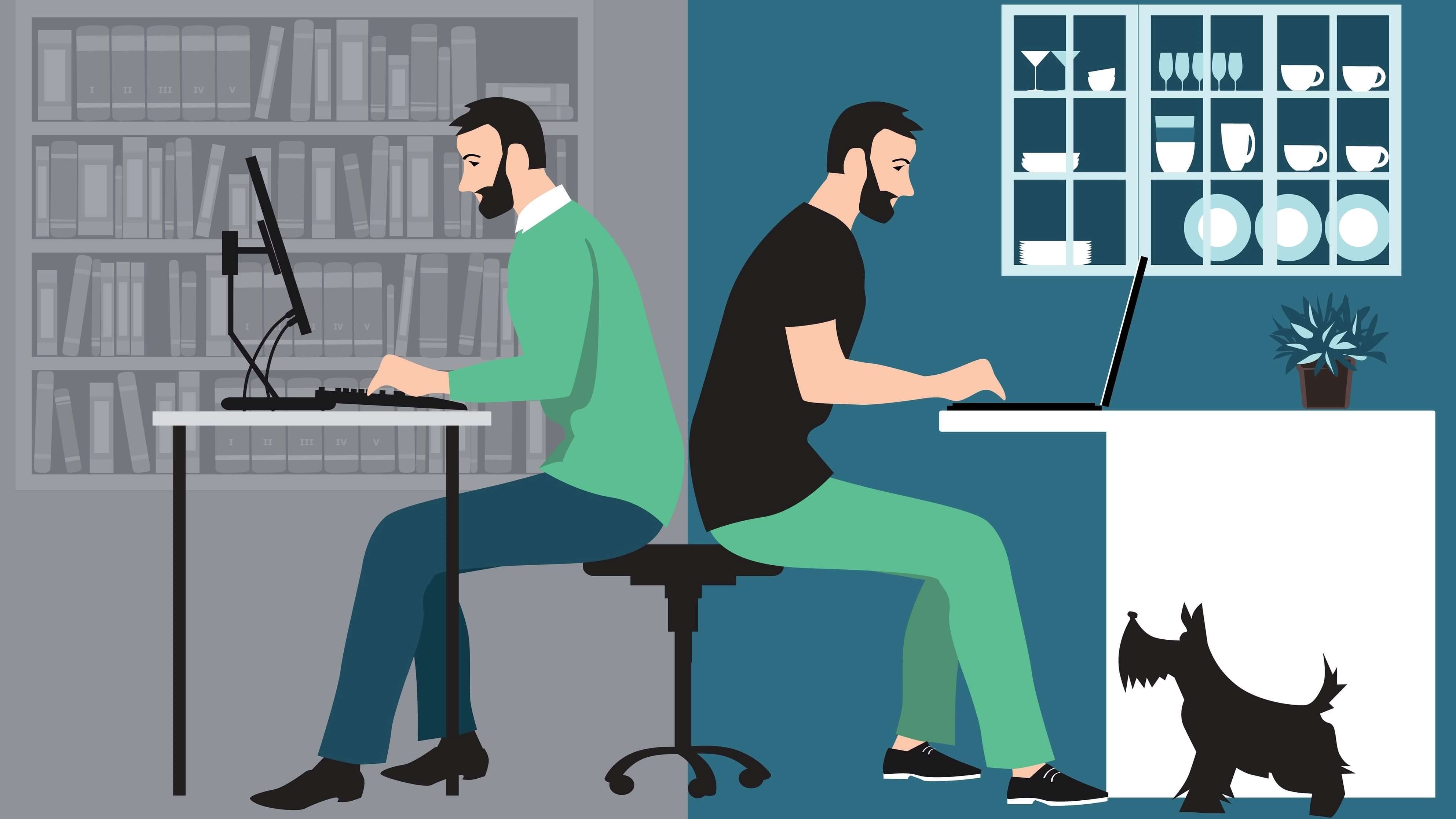Happening now is an escalating struggle between the old world and the new digital realm of virtuality, outcome-driven work, and trust.
Command And Control Vs Digital Connectivity In The Era Of Hybrid Working
Happening now is an escalating struggle between the old world and the new digital realm of virtuality, outcome-driven work, and trust.

The dynamics surrounding hybrid working continue to be intriguing. There are several clear camps on the issue. However, faced with opposition from employees, a significant number of organisations have adjusted their stance to a two- or three-day office working week.
Even then, some employees rejected this proposition preferring to challenge their employers for a permanent flexible working model. Ultimately, it seems that individual teams, supported by capable leaders, will need to find their own equilibrium, akin to responsible adults.
What strikes me increasingly is the clash between two competing ideologies: the "old" model of command, control, and physical presence versus the new paradigm of digital connectivity, virtual collaboration, trust, and outcome-oriented work. The former operates on a foundation of mistrust, assuming employees must be controlled and monitored. The latter emphasises trust in employees' abilities and offers support to facilitate their success.
The good news is that there are progressive organisations out there setting a good example by transitioning to hybrid working in a meaningful way. But what are these organisations doing differently? Their leaders are making conscious changes to their leadership styles, working hard to foster trust and social cohesion outside the office, and building virtual-first cultures complete with new working practices.
It may be tempting to dismiss those clinging to the old model as stubborn fools resistant to change, while heralding the proponents of the new digital world as enlightened beacons of hope. However, taking a step back reveals the profound nature of this ongoing struggle. Throughout history, our minds have been wired to favour the command-and-control model out of necessity. Face-to-face communication thrived on physical proximity, and hierarchical structures arose as leaders issued orders to their subordinates.
This arrangement was geared, at least on paper, toward productivity as work had to be visible to validate its occurrence. Despite contemporary organisational changes such as matrix systems, flatter structures, and management buzzwords, these fundamental elements persist today even in some of the most enlightened companies.
Enter the pandemic. Suddenly, organisations found themselves compelled to trust that their employees could work effectively from home, away from direct supervision. Leaders who had previously been sceptical of remote work, fearing that employees would shirk their responsibilities, were surprised by their staff's competence and dedication.
Many leaders discovered they could place their trust in employees, replacing micromanagement and commands with discussions centred around outcomes, coaching, support, and proactive performance management. Indeed, the leaders learnt they could even trust themselves to work remotely, offering them their own piece of satisfying work life balance.
Additionally, they also realised that physical presence in the office was not a prerequisite for exceptional performance. Virtual tools such as Zoom, Teams, file sharing, and instant messaging bridged the gap created by physical separation.
However, a noticeable tension still remains in many organisations between senior leaders and their employees, which extends beyond mere differences of opinion.
Social cohesion and trust
Our research, in partnership with the Centre for Evidence-Based Management, identified ‘social cohesion’ as one of the key factors that underpins knowledge worker productivity, especially when people work virtually. When social cohesion is strong, colleagues trust one another, co-operate and share information more freely, and develop deeper bonds. They also give each other the benefit of the doubt.
Of course, what transactional leaders fail to realise is that social cohesion is much harder to maintain when teams are working in an asynchronous hybrid model. Without the office, organisations need to make a much more conscious effort to deepen social cohesion in teams and across teams of teams. They need to find fresh and exciting ways to keep people connected and they need to work on it constantly. It’s never a one-time thing.
There will always be value in people coming together in an office to solve tough problems, deal with complex emotional issues, and connect socially with others. Eye contact is better, you see the whole person and there is research that suggest heart-beat patterns converge and we subconsciously smell one another.
But few people need to be a central location for 100% of the time. As a result, leaders need to work with employees to determine the best patterns of working for the team and the amount of face to face in the same space time needed by reflecting on the nature of their work and performing a thoughtful review of what they need.
Today, most employees yearn for increased flexibility, yet some senior leaders want to employ traditional levers, bringing everyone within touching distance. They seem to have developed amnesia regarding the lessons of the pandemic.
Our most recent Hybrid Working Index study of 220 offices in 33 countries, representing nearly 250,000 employees, revealed that hybrid working is becoming established as the norm, with people now coming into the office an average of just 1.5 days a week. Moreover, organisations that insist on a rigid office presence risk damaging employee morale. In a competitive labour market, people vote with their feet, leaving to join employers willing to provide greater flexibility and trust.
Despite this overwhelming evidence, some senior leaders—perhaps even politicians—persistently cling to the old command-and-control model. They attempt to dampen the enthusiasm for remote work by citing their personal experiences as evidence that the new ways will not succeed. They yearn to turn back the clock to February 2020, while the majority aim to progress by embracing flexibility.
The power to think differently.
It may sound as though I am disparaging these old attitudes and behaviours from leaders so I must clarify that I have great sympathy for these leaders. They have grown up within the confines of the old model (command, control, hierarchy, presence), and we know that repetitive actions and thoughts over extended periods cement these ideas and behaviours deeply within the brain as habits. They become engrained mental routines and habits, leading to a narrow perspective. The truth is that these leaders are virtually powerless to think differently.
Until their brains recognise that remaining in the old state is unsafe (and some senior leaders still believe they possess the power to maintain their old ways without change), they will resist the necessary transformation. However, there is hope for them. Concepts like command, control, presence, and hierarchy have become deeply ingrained in our language, minds, and collective psyche over thousands of years.
What we are witnessing now is a profound and escalating struggle between the old world and the new digital realm of virtuality, outcome-driven work, and trust. Two distinct ideologies clash: those clinging to old power, determined to preserve the past, and those armed with knowledge (and newfound power) exerting their influence and driving toward the future. Which ideology will prevail? Only time will tell.
Andrew Mawson is founder and managing director of Advanced Workplace Associates.
Thanks for signing up to Minutehack alerts.
Brilliant editorials heading your way soon.
Okay, Thanks!

